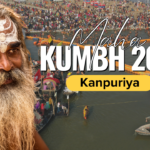Jaipur: The Pink City – A Historical and Travel Guide
Jaipur, the capital city of Rajasthan, is a mesmerizing blend of history, culture, and architectural brilliance. Founded in 1727 by Maharaja Sawai Jai Singh II, the city was the first planned city of India, designed with a grid system inspired by Vastu Shastra. Jaipur is famous for its grand forts, palaces, bustling markets, and vibrant culture, making it a must-visit destination for travelers.
History of Jaipur
Jaipur was established as the capital of the princely state of Jaipur in 1727 by Maharaja Sawai Jai Singh II, who was a keen astronomer and an efficient ruler. Before Jaipur, Amber (now Amer) was the capital of the region, but due to growing population and water scarcity, Jai Singh decided to shift the capital to a new city. He appointed Vidyadhar Bhattacharya, a renowned architect from Bengal, to design the city based on ancient Hindu architecture principles (Shilpa Shastra and Vastu Shastra).
The city was built with wide roads, well-planned markets, and magnificent structures. In 1876, during the visit of Prince Albert of Wales, Maharaja Ram Singh painted the entire city in terracotta pink to welcome the prince, giving Jaipur the name “Pink City”. This tradition continues to this day, and the pink hues of the city’s buildings make it one of the most visually stunning places in India.
Top 10 Must-Visit Places in Jaipur
1. Amer Fort (Amber Fort)
- Location: 11 km from Jaipur
- History: Built in 1592 by Raja Man Singh I, later expanded by Sawai Jai Singh
- Key Features:
- Blend of Mughal and Rajput architecture
- Sheesh Mahal (Mirror Palace) – a stunning chamber covered with thousands of mirror mosaics
- Elephant rides to the fort entrance
- Light and sound show in the evening
2. City Palace
- Location: Heart of Jaipur
- History: Built in the 18th century by Sawai Jai Singh II
- Key Features:
- Royal residence with magnificent courtyards, gardens, and buildings
- Houses museums showcasing royal attire, weapons, and artifacts
- Mubarak Mahal and Chandra Mahal with intricate Rajasthani architecture
3. Hawa Mahal (Palace of Winds)
- Location: Near City Palace
- History: Built in 1799 by Maharaja Sawai Pratap Singh
- Key Features:
- A five-story structure with 953 small windows (jharokhas)
- Designed for royal women to observe street life without being seen
- Offers a stunning sunrise view over the Pink City
4. Jantar Mantar
- Location: Near City Palace
- History: Built in 1734 by Maharaja Sawai Jai Singh II
- Key Features:
- UNESCO World Heritage Site
- Largest stone sundial in the world
- 19 astronomical instruments used to measure time, predict eclipses, and track celestial bodies
5. Nahargarh Fort
- Location: Aravalli Hills, overlooking Jaipur
- History: Built in 1734 by Sawai Jai Singh II
- Key Features:
- Originally built for defense and as a retreat for the royal family
- Offers panoramic views of the city
- Madhavendra Bhawan – a palace inside the fort with elaborate rooms
6. Jal Mahal (Water Palace)
- Location: Middle of Man Sagar Lake
- History: Built in the 18th century by Maharaja Madho Singh I
- Key Features:
- Appears to float on water
- Blend of Mughal and Rajput architecture
- Best viewed during sunrise and sunset
7. Albert Hall Museum
- Location: Ram Niwas Garden
- History: Built in 1887, designed by Sir Samuel Swinton Jacob
- Key Features:
- Rajasthan’s oldest museum
- Showcases ancient coins, carpets, paintings, and an Egyptian mummy
8. Birla Mandir (Laxmi Narayan Temple)
- Location: Near Moti Dungri Fort
- History: Built in 1988 by the Birla family
- Key Features:
- Constructed entirely of white marble
- Beautiful carvings depicting Hindu scriptures and deities
- A peaceful and spiritual atmosphere
9. Galtaji Temple (Monkey Temple)
- Location: 10 km from Jaipur, nestled in the Aravalli Hills
- History: An ancient Hindu pilgrimage site
- Key Features:
- Natural springs and sacred kunds (water tanks)
- Home to hundreds of monkeys
- Unique blend of nature and spirituality
10. Jaigarh Fort
- Location: 15 km from Jaipur
- History: Built in 1726 by Maharaja Sawai Jai Singh II
- Key Features:
- Houses Jaivana Cannon, the world’s largest cannon on wheels
- Underground tunnels connecting it to Amer Fort
- Unmatched views of the Aravalli ranges
Useful Information: Jaipur Travel Guide
| Category | Details |
|---|---|
| Best Time to Visit | October – March (pleasant weather, ideal for sightseeing) |
| How to Reach | – By Air: Jaipur International Airport (12 km from city center) – By Train: Jaipur Railway Station is well-connected to major cities – By Road: Well-connected by highways (NH8, NH11, NH12) |
| Local Transport | Auto-rickshaws, taxis, buses, and app-based cabs (Ola/Uber) |
| Famous Markets | – Johari Bazaar (jewelry) – Bapu Bazaar (textiles, handicrafts) – Tripolia Bazaar (lac bangles) |
| Must-Try Food | – Dal Baati Churma – Ghewar – Pyaz Kachori – Laal Maas (spicy mutton curry) |
| Cultural Events | – Jaipur Literature Festival (January) – World’s largest literary festival – Teej Festival (July-August) – Celebrated with processions and dances – Elephant Festival (March) – Features elephant polo and traditional games |
Why Visit Jaipur?
Jaipur is a city that beautifully blends tradition and modernity. Whether you’re a history buff, an architecture lover, a foodie, or a shopaholic, the city has something to offer for everyone. Its forts and palaces transport you back to the era of Rajput kings, while the bustling markets give you a taste of Rajasthan’s vibrant culture. The warmth of the locals, the colorful streets, and the exquisite Rajasthani cuisine make Jaipur a truly unforgettable destination.




0 Comments